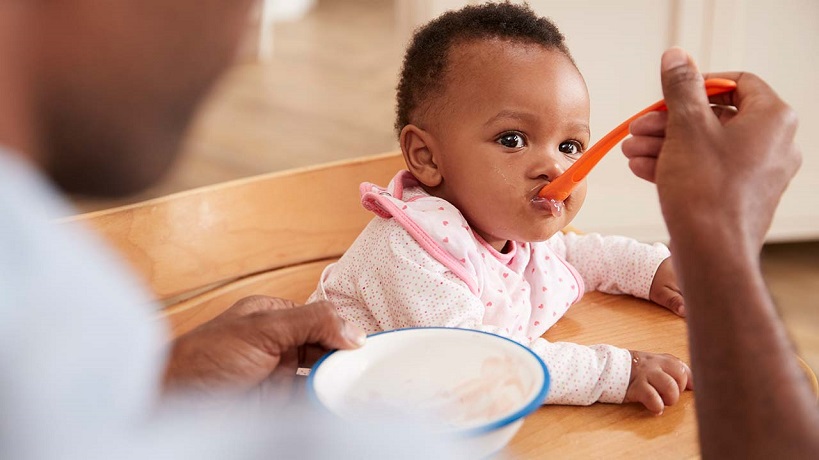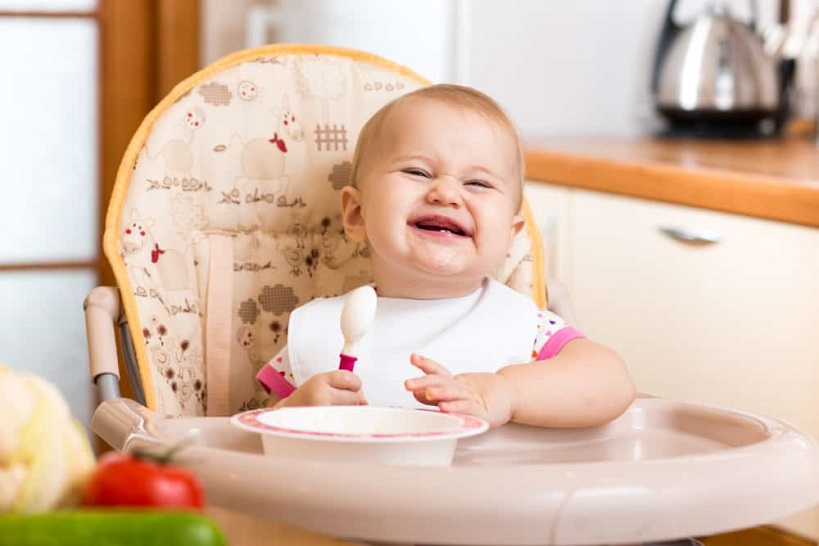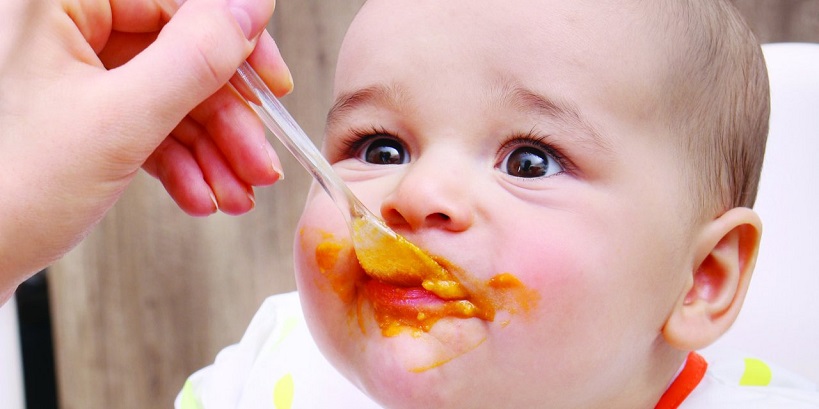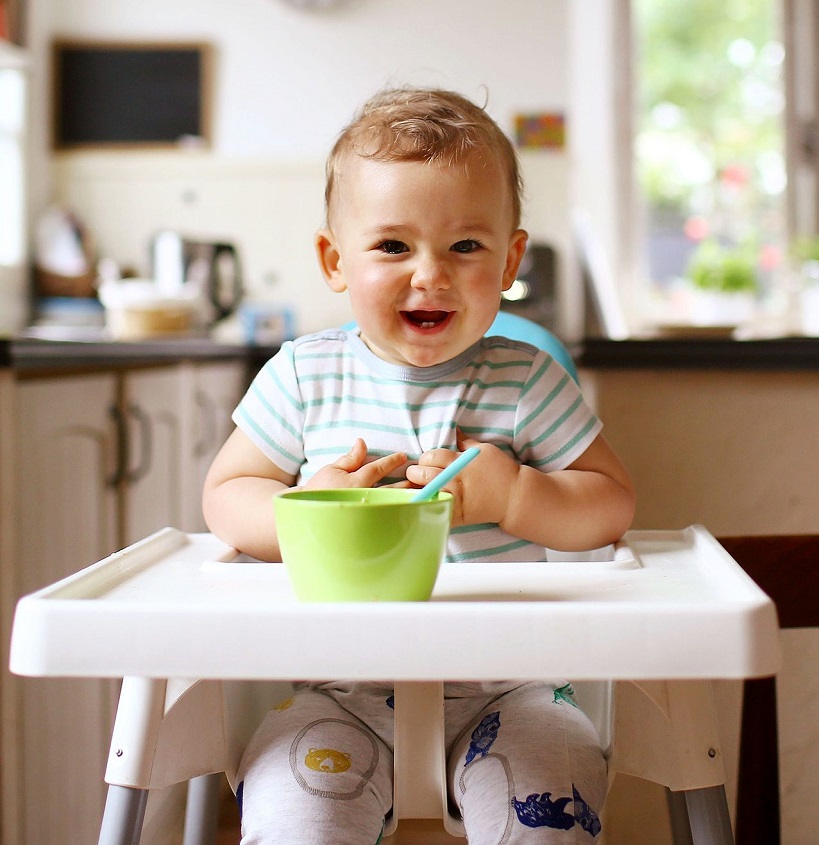Feeding Products to Help Introduce First Solid Foods to Baby
Contents
If you’re a new parent, you may be counting down the days until you see your little one’s face smeared with sweet potato puree – it’s a pretty cute look! While starting solids is one of the most fun milestones over your baby’s first year, it’s also one of the messiest and there is a lot to think about as well. From figuring out the best first foods to high chairs, baby plates and more, it’s easy to get overwhelmed with information and have a hard time making a decision.

The good news is you don’t need a lot of stuff when it comes to feeding your baby. I would say it’s a pretty straightforward, low maintenance gig at first. But, still, there are definitely a few must-have items that I personally loved and leaned on over the years that have helped make introducing solid food to my children a lot easier and more fun too. Here is the list of feeding products that I used to start my children on solids.
A Comfortable High Chair
You know your baby is ready to sit in a high chair when he/she can sit up unassisted (usually around five or six months old). As you consider which high chair to choose, think about how much space you have in your kitchen and how much money you plan to spend on it. You don’t have to spend a fortune on a high-end chair, but it’s a good idea to invest in one that is durable (especially if you plan to have multiple children) and that your child seems comfortable in. You also want to make sure the chair you choose is easy to clean. Features like a detachable tray can be very helpful for quick clean up.

The Right Plate
The best baby and toddler plates will help you do more than just feed your little one – they also make the experience of trying new foods easier, cleaner and more enjoyable. Some babies don’t like when their food items touch each other. They are more likely to eat their meals if the items are separated and in other sections. For example, plastic baby plates with divided sections are the perfect option if you have a picky eater. These plates often come with three sections. You can, for example, add rice to the bigger section, cucumber slices in the second one and some fresh pieces of fruits in the other. Plastic plates are also easy to clean and prevent the moulding of bacteria. The majority is also dishwasher safe.
Some children enjoy tipping away their plates and bowls from their hair chairs. To prevent ending up with a huge mess, consider getting a suction plate. These plates come with suction cups at the bottom that allows them to stack easily on the high chair or any other smooth surface. Babies are unable to pull these plates or throw them. Once mealtime is over, you can easily remove these plates by pulling up the quickly-release tabs.
If you’ll be heading outside and want to pack a snack for your baby, food storage tray containers are a great option to consider. They have divided sections that allow you to keep the items separately, so you can easily feed your baby when you are travelling and then cover the unfinished food with a lid. Storage trays are microwave friendly and they feature vents on their lids. So, if you overhead the food in the microwave, you can use the lid vent to cool down the food before serving it to your baby.
Soft Baby Spoons
Although soft finger foods are a great option for babies who have developed the ability to pick up foods between their fingers, most parents start by offering their babies pureed food. Considering that adult size spoons are too big for a baby’s spoon, you’ll need to invest in some baby spoons for feeding. Soft, flexible spoons are best to teach your toddler to self-feed as they are easier for the baby to manage and also help prevent gagging. Keep in mind that babies do best with small amounts at first, so even though the spoon might not look like it holds a lot of food, that is totally okay. Give preference for coloured spoons as they can get your baby interested and excited.

Easy-to-Clean Bibs
Nowadays you can find many different kinds of bibs available on the market, and as long as you have enough of them you’ll be fine. That said, your baby is going to make a lot of messes, especially at the beginning, so it’s smart to have a bit that is super easy to clean. Trust me, bibs made of waterproof material are invaluable and bibs that have little pockets at the bottom to catch spilled foods can be really helpful. Make sure the bib you choose is comfortable and stays on your baby well.
Food Maker
Many parents choose not to make their own baby food and it’s totally okay if you do too. Taking care of a baby is time-consuming enough and adding another chore to the list can feel overwhelming. However, if you’re like me, you may like to experiment with different recipes and make your baby’s first foods from scratch. One of the reasons I liked doing so is that I had more control over the kids of foods and the quality of the foods my children were consuming.
To make homemade baby food, there are many baby food makers on the market that you can count on, some as simple as a bowl and mashers and some electric devices such as a baby food processor with many attachments and settings. I used an all-in-one baby food maker to preparer food for my children’s. This device allows you to both steam and process the food. Steaming vegetables in the food maker instead of boiling them in a pot helps preserve more of the nutrients. As much as 80% of a vegetable’s vitamin content is preserved through steaming compared to around 30% for boiling. Because the device also works as a baby food processor you can use it to process all of the hard food ingredients.
You can steam vegetables in about 15 minutes and the processing part takes only a few seconds. Depending on the recipe, it may take even less time than that. This means you can prepare a delicious meal or snack for your toddler in no time at all. Different settings found on these devices allow you to cook food for your child at different ages. For example, smoothing food completely is best for kids between four and six months while chunkier concoctions can be made when your child is over 12 months.



